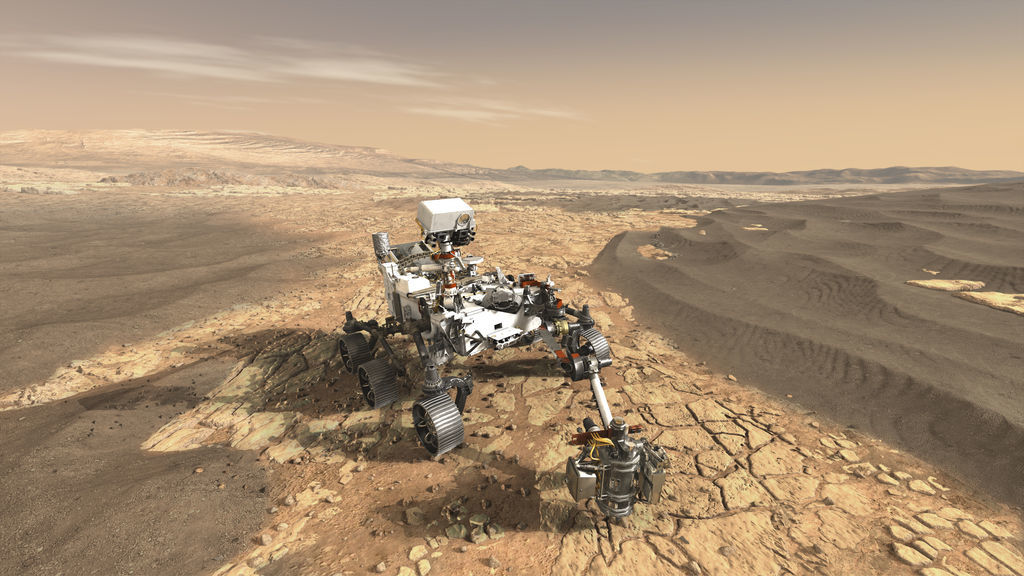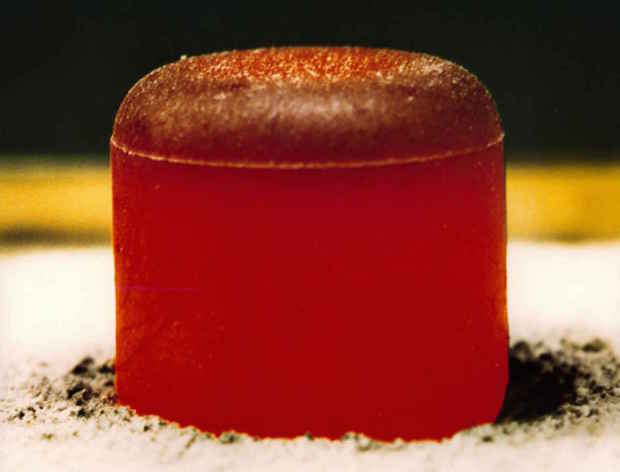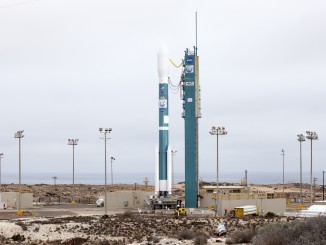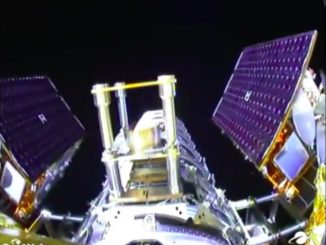
The nuclear power generator for NASA’s Perseverance rover has been installed on the spacecraft atop an Atlas 5 rocket at Cape Canaveral, and mission managers gave a green light Wednesday to continue preparations for the rover’s July 30 launch toward Mars.
The rover’s Multi-Mission Radioisotope Thermoelectric Generator, or MMRTG, was transferred from a preparation building to the Atlas 5 rocket’s Vertical Integration Facility, and was hoisted by crane onto a work platform near the top of the 197-foot-tall (60-meter) launcher.
Technicians inserted the power generator through an access door on the Atlas 5’s payload shroud, then placed the device on the aft end of the Perseverance rover through an opening on the spacecraft’s backshell, which encloses the rover and its landing system during the journey from Earth to Mars.
The 99-pound (45-kilogram) unit was installed onto the rover Monday, according to Mary MacLaughlin, a NASA spokesperson.
After connecting mounting bolts and mating electrical lines, ground crews powered up the rover using the newly-installed MMRTG.
The power source was the final major component to be added to the Perseverance rover before its scheduled launch next week. The rover is the centerpiece of NASA’s $2.4 billion Mars 2020 mission.
“At this point, the spacecraft has been powered on and will remain so around the clock,” said Dave Gruel, manager of Assembly, Test and Launch Operations, or ATLO, for the Mars 2020 mission. “The launch operations team will continue to monitor the health of the spacecraft to ensure it’s ‘go’ for launch — nothing glamorous, but an important part of the job.”
Developed by the U.S. Department of Energy, the MMRTG works by converting heat from the natural radioactive decay of plutonium-238 — a special non-weapons grade isotope of plutonium — into electricity. The generator contains 10.6 pounds (4.8 kilograms) of plutonium dioxide fuel.
The device produces about 110 watts of power at the start of Perseverance’s mission, roughly equivalent to the power draw of a light bulb. The MMRTG’s power efficiency declines by a few percent per year.

The MMRTG will charge two lithium-ion batteries on the Perseverance rover. The batteries will power the robot during times of peak power usage, when NASA says power demand can reach 900 watts during science operations on Mars.
Nearly 95 percent of the energy produced by the MMRTG will be in the form of excess heat. That will help keep the Perseverance rover’s internal electronics warm in the cold temperatures at the Martian surface.
The MMRTG is the latest in a line of nuclear power sources and heaters used on more than 30 U.S. space missions since 1961.
The one-ton Perseverance rover is a near-clone of NASA’s Curiosity rover, which launched in 2011 and landed on Mars in August 2012. Perseverance carries an upgraded suite of scientific instruments, including improved cameras and a payload to demonstrate producing oxygen from carbon dioxide in Martian atmosphere, a key capability for future human expeditions.
NASA’s Ingenuity Mars Helicopter is also accompanying the Perseverance rover to the Red Planet. After landing on Mars on Feb. 18, 2021, the rover will deploy the solar-powered drone for a series of test flights. The Ingenuity helicopter — with spinning blades spanning about 4 feet (1.2 meters) in diameter — will attempt to become the first rotorcraft to fly in the atmosphere of another planet.
One primary goal for NASA’s new Mars rover is the collection of rock samples using a coring drill. The samples will be sealed in ultra-clean tubes for return to Earth by a future robotic mission.
The MMRTG for the Perseverance rover includes a small amount of plutonium-238 produced by the Department of Energy in recent years. The United States halted production of plutonium-238 in 1988, and the U.S. government purchased the material from Russia from 1992 until the late 2000s.
NASA and the Department of Energy announced in 2013 that plutonium-238 production had resumed at Oak Ridge National Laboratory in Tennessee, helping ensure nuclear power generators are available for future deep space missions.
NASA’s Dragonfly mission, which will send a flying quadcopter to Saturn’s moon Titan, is the space agency’s next probe that will be powered by an MMRTG. Dragonfly is scheduled to launch in 2026.

NASA managers cleared teams to proceed with final preparations for the Perseverance rover’s launch during a Flight Readiness Review Wednesday.
“We’re pleased to be passing another milestone with the completion of the Flight Readiness Review,” said Matt Wallace, deputy project manager for the mission at NASA’s Jet Propulsion Laboratory in Southern California. “But we’ll keep our heads down through the final prelaunch activities and the opening of the launch window next week, until we’re certain this spacecraft is safely on its way. Mars is a tough customer, and we don’t take anything for granted.
“At present, everything is green across the board,” Wallace said in a statement. “Everyone involved with this endeavor, from the spacecraft team to the launch vehicle team to those working the range, are looking forward to seeing Perseverance begin its long-awaited flight to Mars.”
Many members of the NASA and United Launch Alliance teams preparing for next week’s launch will take some time off this weekend. Engineers and technicians at the Kennedy Space Center have worked long hours and weekends over the past few weeks to keep the Mars 2020 mission on track for launch July 30.
The mission was supposed to take off July 17, but problems with a crane fixture at ULA’s Atlas 5 assembly building, a leak in a liquid oxygen line on the Atlas 5 rocket, and slowdowns caused by the impacts of the coronavirus pandemic combined to push back the launch date by 13 days.
The Mars 2020 mission’s launch period extends until mid-August. A delay beyond that point could cause the mission to remain grounded for two years, until Earth and Mars are again in proper alignment for a direct launch to the Red Planet.
A Launch Readiness Review on Monday, July 27, is expected to give approval for ULA to transfer the Atlas 5 rocket from its vertical hangar to pad 41 at Cape Canaveral Air Force Station the following day.
That will set the stage for countdown preparations and filling of the Atlas 5 rocket super-cold propellants early on July 30, when the mission has a two-hour launch window opening at 7:50 a.m. EDT (1150 GMT).

The Perseverance rover is the third of three Mars missions launching this month.
The Hope orbiter developed by the United Arab Emirates launched Sunday on a Japanese H-2A rocket, and China’s Tianwen 1 orbiter, lander and rover was scheduled to take off Thursday.
All three missions are due to arrive at Mars in February 2021.
Email the author.
Follow Stephen Clark on Twitter: @StephenClark1.



